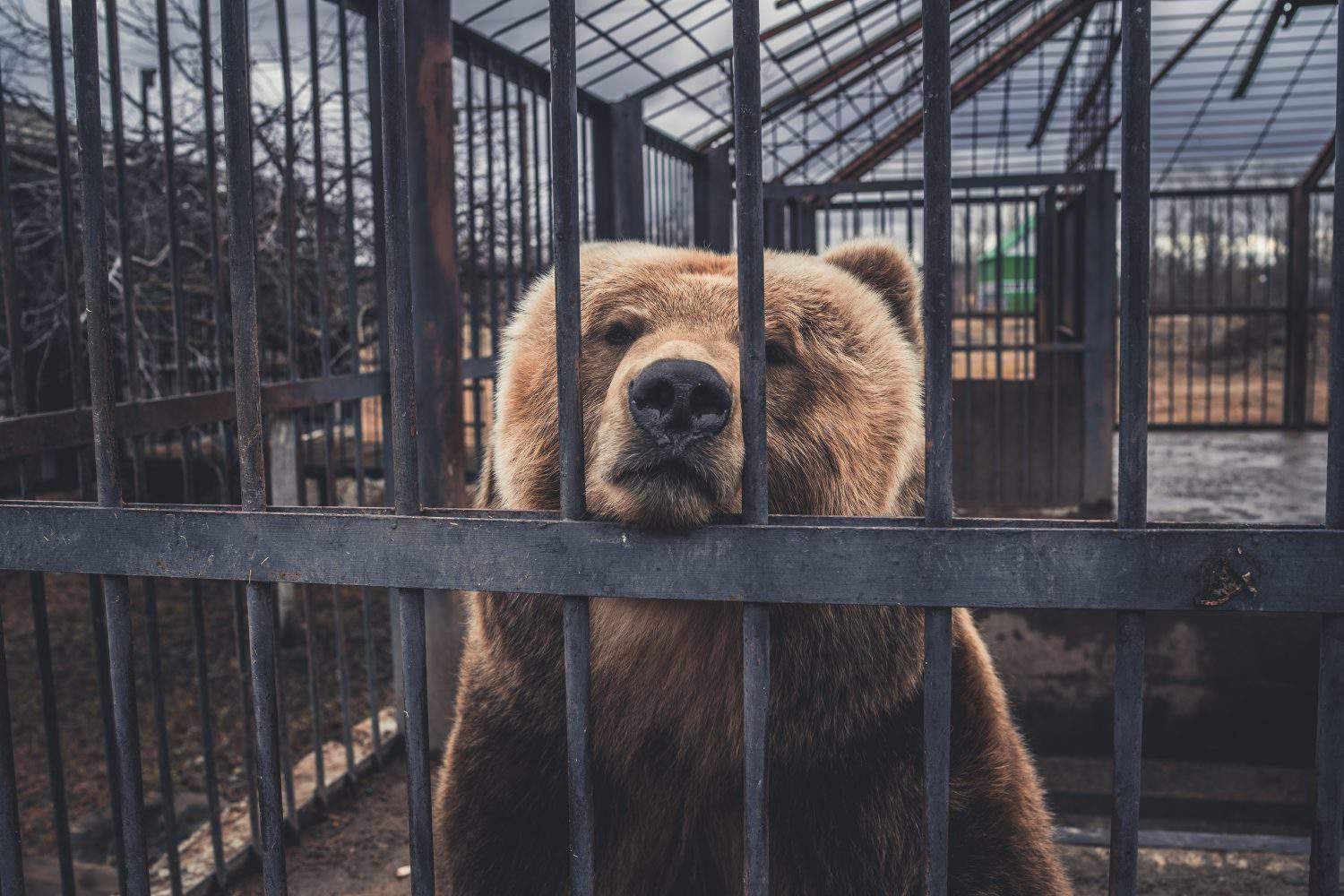While it would be unthinkable to have happened today, animals, including insects, faced the possibility of criminal prosecution across many parts of Europe for several centuries. The earliest extant record of an animal standing trial in a court is often erroneously believed to be the case of an execution of a pig in 1266 at Fontenay-aux-Roses in France. However new evidence from this record indicates that no judicial process occurred in this case. The pig was simply executed. Animal trials were a part of the European legal system until the 18th century, and nonhuman defendants appeared in both secular and ecclesiastical courts.
Human witnesses to the crimes were heard at the court proceedings and lawyers were appointed to defend the animals in ecclesiastical courts. Most of what we know today about animal defendants appears in E. P. Evans’ book, “The Criminal Prosecution and Capital Punishment of Animals” from 1906. For more information on this topic, we recommend you seek out a copy of this book.
We usually try to provide users with links that better explain the topic we cover. However, most of the information we got on this topic comes from Evans’ book, which we could not find a full, free copy of on Google Books. Thus, we cannot link you to additional sources. However, we scoured the book for the most well-known and interesting cases of trial and punishment of animal defendants across history. Additional sources we recommend seeking out that cover this topic in some capacity are Kar von Amira’s research and Sdakat Kadri’s “The Trial: Four Thousand Years of Courtroom Drama” from 2006. (Check out this article on seven animals that were parachuted into battle.)
The Case of Rooster Laying an Egg in Basel, 1474
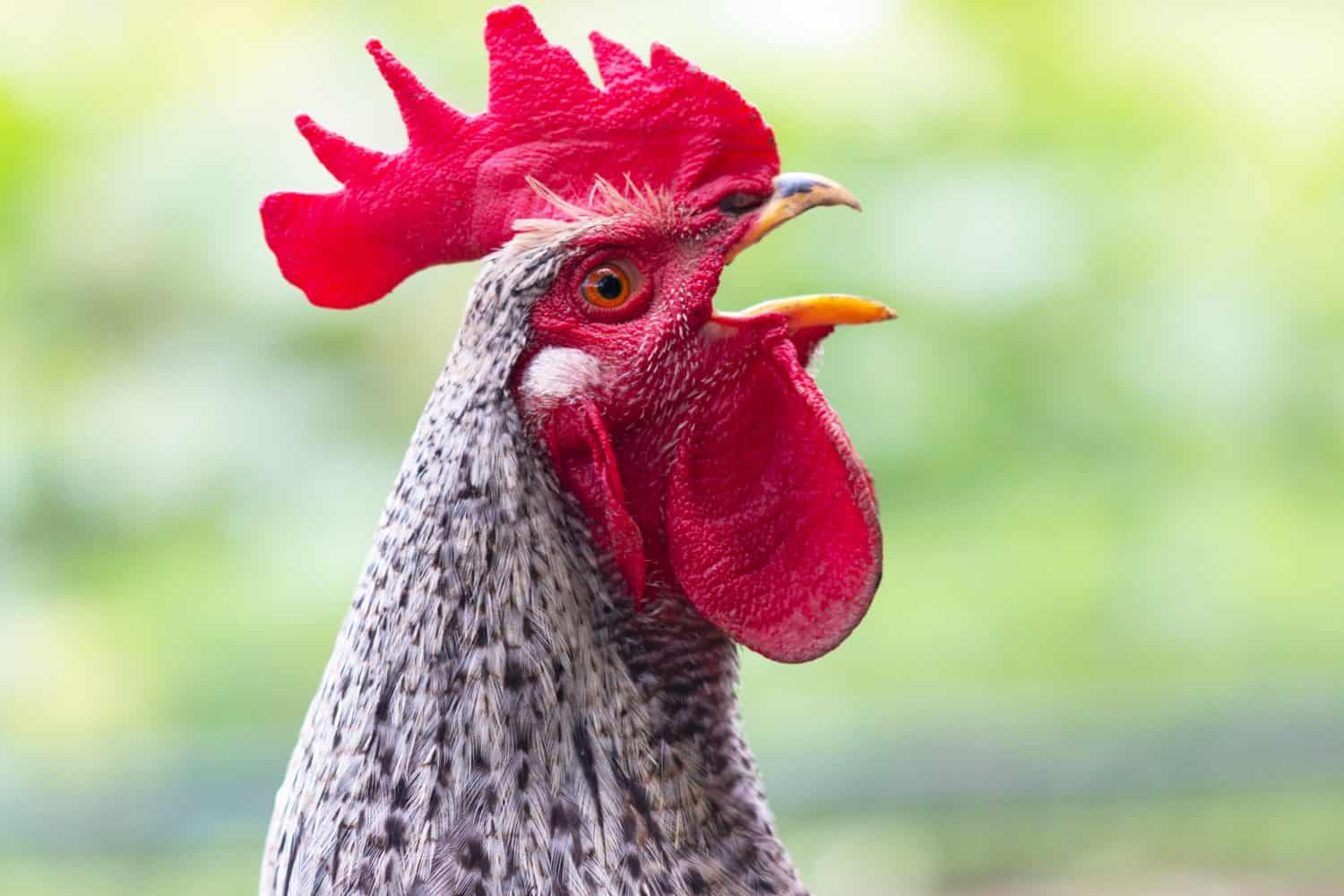
One of the most well-known animal trials in history is the case of a rooster laying an egg in Basel, 1474. At the time, roosters laying eggs was considered a sign of the end times, as the people believed that an egg laid by a rooster would hatch into a cockatrice or a basilisk. Of course, these creatures had never been recorded in history and no one in Basel had ever actually seen one. However, that didn’t stop people from vehemently believing this myth. As such, when a rooster in 1474 was found to have laid an egg, the rooster was declared the spawn of Satan and the people decided to try the rooster to give it a chance to speak for itself.
In this case, we can see a clear overlap in the trial of the rooster with the witch trials that plagued Europe and America during the time—the period of witch trials started around 1400. So, by the time the rooster in Basel laid an egg, the people of Europe and America were already in a frenzy trying to find the witches hidden in their midst. There was a marked increase in ecclesiastical vermin trials around the same time the witch trials began. While many of the cases of animals being put on trial were for nonmagical crimes, such as simple murder or maiming, we can correlate the anthropomorphism that is required for these cases to hold weight with the increase in the belief in and prosecution of witches.
Katya the Bear
Katya the bear’s trial and imprisonment in Kazakhstan is one of the few modern cases of animal trials. This case occurred in 2004. Katya was tried and convicted of mauling two people in separate instances. This case is a bit more like the other cases we were able to find that were publically acknowledged in that the crime is pretty simple and easy to prosecute, without paranormal influences or charges being held against the animal in question. Katya was tried in court and sentenced to imprisonment. She ultimately ended up serving 15 years of imprisonment in Arkalyk Prison in Kostanay, Kazakhstan. Whether she was kept with other prisoners or kept in solitary confinement is unclear. During her stay in Arkalyk Prison, there were no further cases of violence or mauling by Katya that we know of.
In 2019, Katya was released from prison and allowed to reintegrate with other bears. Due to her long imprisonment, Kazakhstan’s officials decided to appoint her a handler to ensure that she was able to reintegrate into her environment, and it does not appear that she was released into a free-roaming area. According to her handlers, she can socialize well with other bears despite her long imprisonment. Many animal rights advocates and even officials worried that Katya would struggle to reintegrate after such a long time without interacting with other bears. In many cases of animal isolation, there is a decrease in social ability, both inter and intraspecies. However, Katya did not appear to suffer from severe social deficits despite her long isolation.
Monkey Mistaken for a Spy in Hartlepool
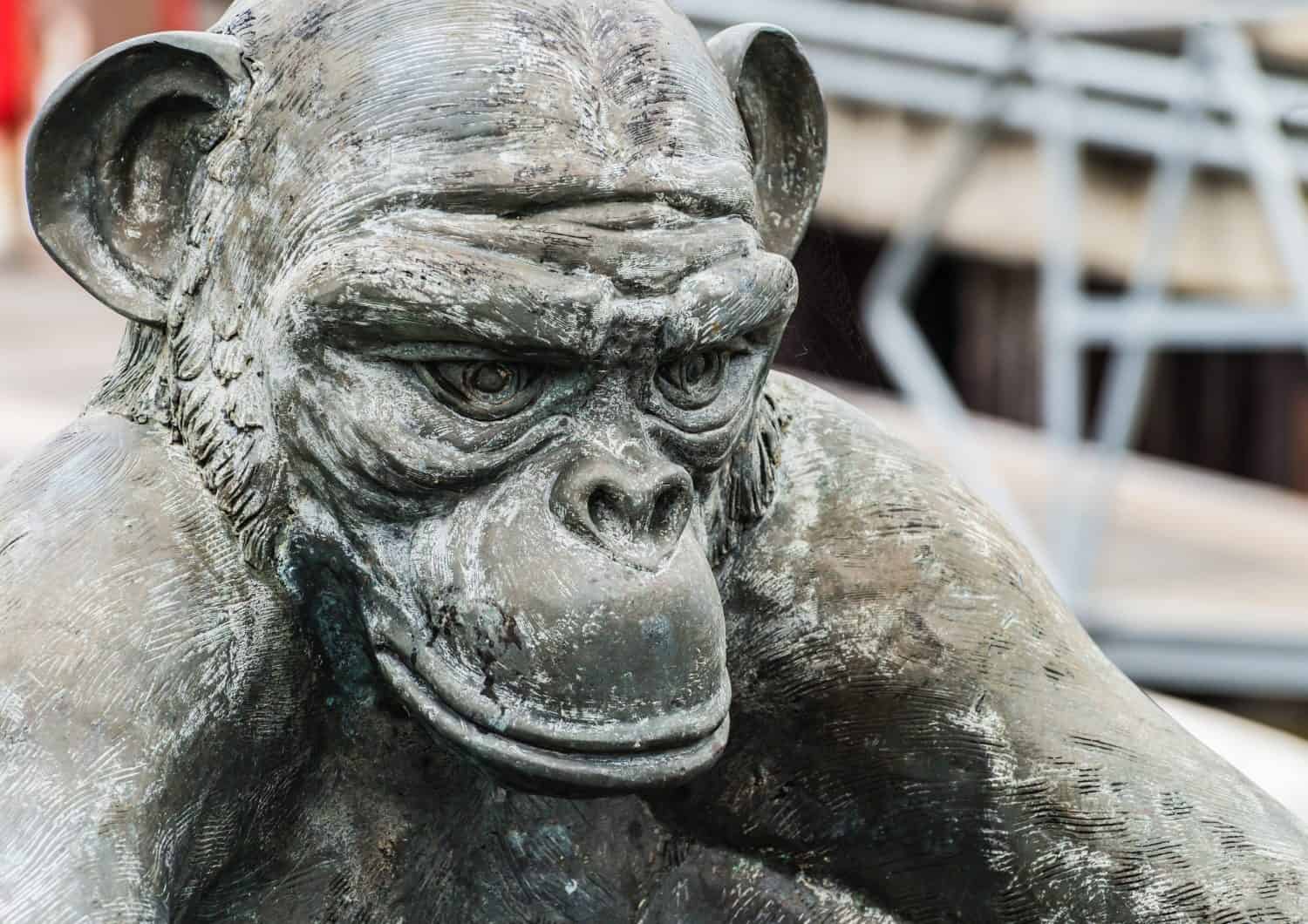
We want to emphasize that this case of an animal trial is actually just a well-known local legend. There are no records of this case occurring. However, due to its popularity and cultural influence in the area, we decided to include it. According to the local folklore, a French Navy ship wrecked off the coast of Hartlepool during the Napoleonic Wars. The only survivor of the shipwreck was a monkey who had acted as the ship’s mascot. Thus, the monkey was dressed in a tiny French Navy uniform for the soldiers’ amusement.
The Hartlepool locals mistook the monkey’s chattering as the French language, which they presumably did not speak. Thus, they suspected the monkey of being a French spy. The people of Hartlepool decided to hold an impromptu trial for the monkey on the beach. Given that the monkey could not talk and they believed its natural chattering noises to be French words, the people of Hartlepool declared the monkey guilty of espionage for the French and hanged the monkey on the beach.
While there is no verifiable proof that this situation ever truly occurred, the local legend is a relatively big part of English culture in the area. People from Hartlepool are sometimes referred to as “monkey hangers” by the people in surrounding areas and other places in England, in reference to the case of the monkey hanging on the beach. We may never know if the people of Hartlepool hanged an innocent monkey because they could not distinguish monkey chattering from the French language, but that doesn’t stop us from having a laugh about it at their expense.
Ferron Case
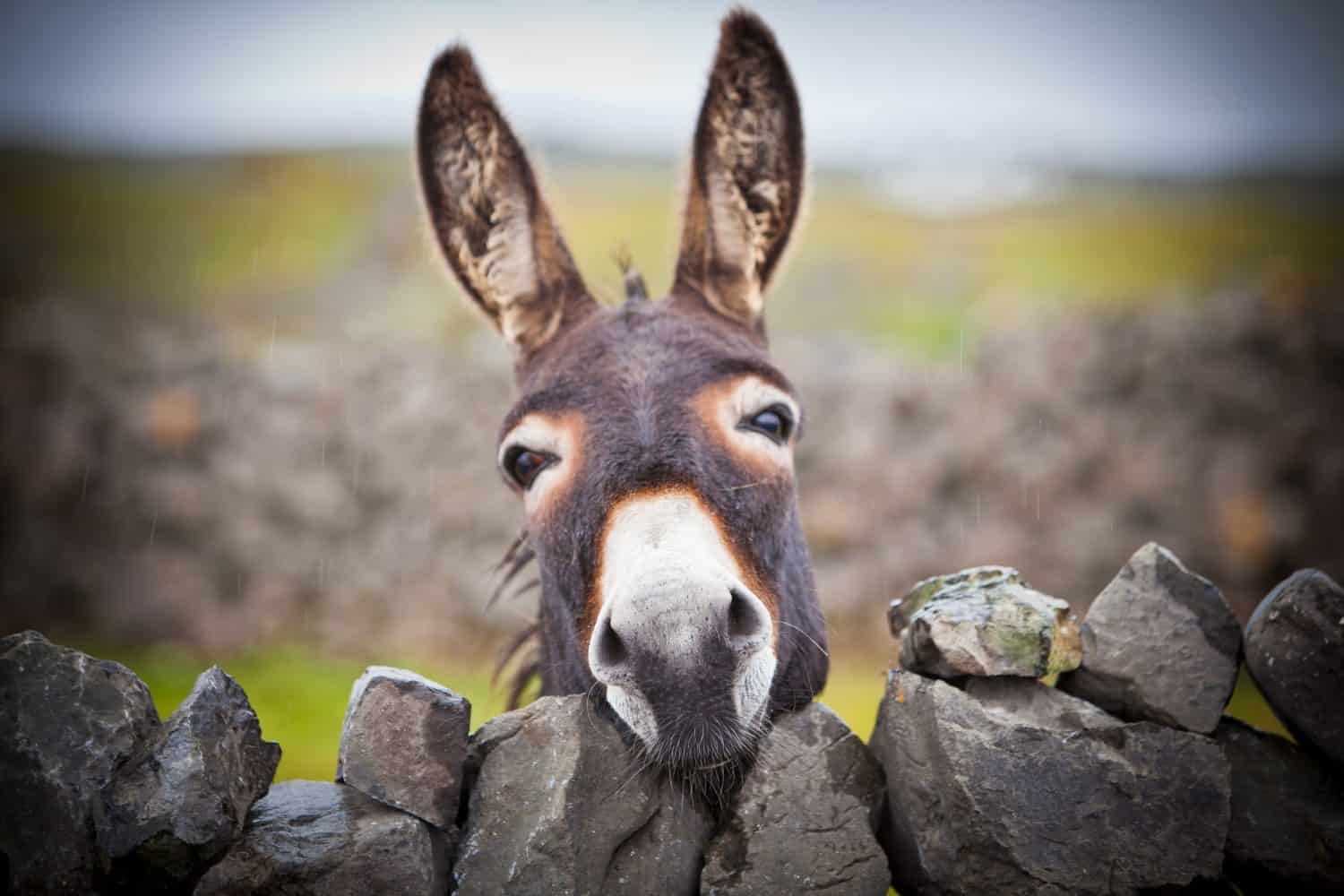
This case took place toward the end of the prevalence of animal trials in Europe. It occurred when Jacques Ferron was caught having sex with a female donkey in 1750. These cases were not unheard of. Unfortunately, bestiality wasn’t anything new. However, punishing the offenders was not always a priority for government and judicial officials. Due to the anthropomorphism impressed upon the animal victim in bestiality cases at the time, typically the animal was tried as a willing participant in an abhorrent, criminal act. As a result, when the dual defendants were found guilty of the crime of bestiality, they were both punished equally. However, the Ferron case was unique in this regard.
During the case, several witnesses came forward both in person and in writing attesting to the donkey’s virtue, claiming there was no way she would have participated of her own free will. Even the local parish priest attested to the donkey’s good and virtuous behavior, declaring she was Ferron’s victim rather than a co-participant. A document submitted to the court, signed by several people, including the parish priest and other principal residents of the area, stated that “they were willing to bear witness that she [the donkey] is in word and deed and in all her habits of life a most honest creature.” The document and testimony were accepted. Ultimately, the court ruled that the donkey was Ferron’s victim, exonerating her from punishment in the case.
Ferron was sentenced to death for the sexual abuse of the donkey. However, this punishment was typical whether the animal was ruled a victim or a participant. In cases where both the animal and the human were convicted, typically both parties would be sentenced to death.
The Great Cat Massacre

The case of the Great Cat Massacre is perhaps one of the strangest animal trials we have on record. Like the case of the monkey in Hartlepool, this is a case of an impromptu trial. However, this case is far more gruesome and disturbing. We recommend taking care when researching this situation as some people may find the contents of the case upsetting.
The story starts with a printing shop in Paris. A young worker at the shop explained that he and the other apprentices at the shop found their lives to be unbearably difficult due to the poor treatment by the shop owner and his wife. The food they ate was terrible, they worked long hours and lived in an area with dozens of alley cats that kept them up at night with their howling. To make matters worse, the printer’s wife kept a pet cat, her la grise (“the grey”), which received significantly better treatment than the shop apprentices, furthering their resentment against their employers. Angered by the poor treatment, the shop apprentices began to plot for revenge.
One of the apprentices mimicked the howling of a cat near the master’s bedroom. Eventually, the apprentices were ordered to deal with the cats outside. The apprentices proceeded to bludgeon all the cats nearly to death, including la grise. Then, they held a mock trial for the battered animals, declaring them guilty and stringing them up on improvised gallows. The master and mistress were horrified by the scene, but eventually withdrew and allowed the apprentices to celebrate their violence.
Slug Infestation Case

The term “slug infestation case” could apply to any one of several infestation cases regarding slugs. However, we are referring to an incident that occurred in the 1480s when the Cardinal Bishop of Autun in France ruled against an infestation of slugs that lived on the church estate grounds. This case is one of many ecclesiastical court cases against infestations of non-vertebrate animals such as insects, or, in this case, slugs. As it was an ecclesiastical case, the slugs would have been appointed a lawyer to represent them in their case against the state.
Ecclesiastical animal cases were performed under the pretenses of many different defenses. Church-appointed lawyers took many approaches when defending the animals. In some cases, they argued that the animals were creations of God. Thus, their actions were part of God’s personal will. So, interrupting it would be defying God. In other cases, they argued that since the animals needed the food they “stole” to survive, they could not be held accountable as they had no way of procuring that food for themselves. Regardless of the defense, in this case, the slugs were declared guilty. The Cardinal Bishop ordered three days of processions, ordering the slugs to leave the estate grounds or be excommunicated. Once the slugs were excommunicated from the church, they were no longer protected by God. As they were no longer ‘God’s creatures’, the humans who owned the estate could exterminate them freely.
It’s worth noting that insect and other invertebrate cases were not uncommon during the era of animal trials. Cases brought against vermin infestations were the primary targets of the church during this era. According to the records we have of this time, a similar case to this one was brought about a year later in the same general area.
Murder Trial of Three Pigs in 1379
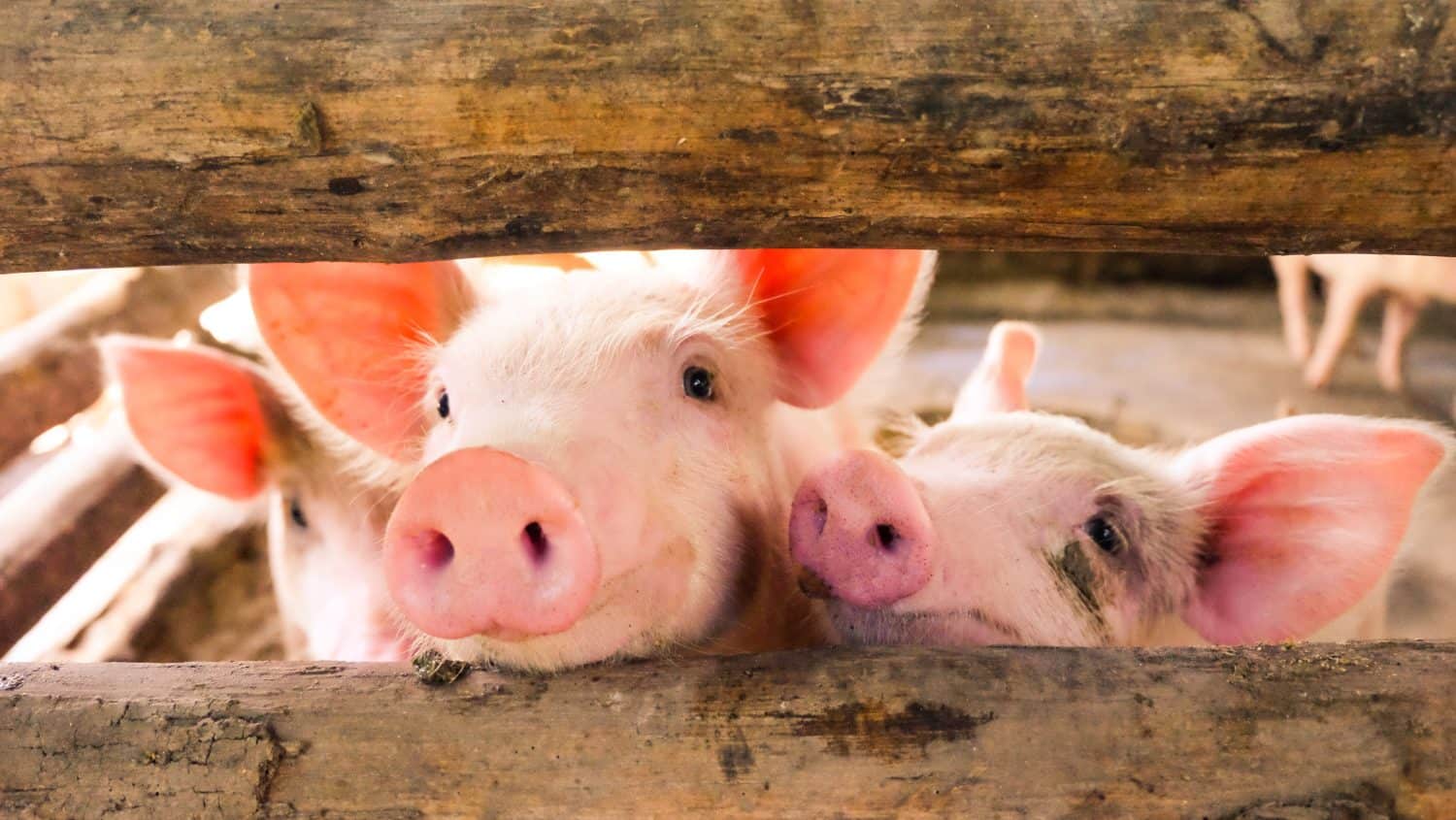
One of the first recorded animal trials we have evidence of is a murder trial brought against two herds of pigs in 1379. The records indicate that two herds of swine were feeding together under the guardianship of the swine master and his son. While feeding, some of the pigs became agitated and charged the swine master’s son. The boy was gravely injured and eventually perished due to his injuries. Thus, the pigs were brought to trial for the murder of the boy.
The records indicate that the charges were initially brought against the entirety of both herds of pigs. However, all but the three pigs who actually attacked the boy were officially ruled as accomplices in the case, rather than perpetrators. Thus, all but the three attacking pigs were spared capital punishment under the law. The three instigating pigs “after due process of law, were condemned to death” for the murder of the swine master’s son.
This is not the only case of an animal being tried for the murder of a human. Murder trials for animals were rather common at the time. The perception that animals were violent to humans on purpose and with all the same mental faculties as humans persists in the modern day, even though we have moved on from trying animals in court in general. Pigs were a common target of animal-human murder trials. This prevalence is largely due to the ease with which pigs can be instigated to violence. Pigs are known to attack, kill, and even eat humans, even those they have been socialized with successfully.
Public Burning of a Pig in 1266
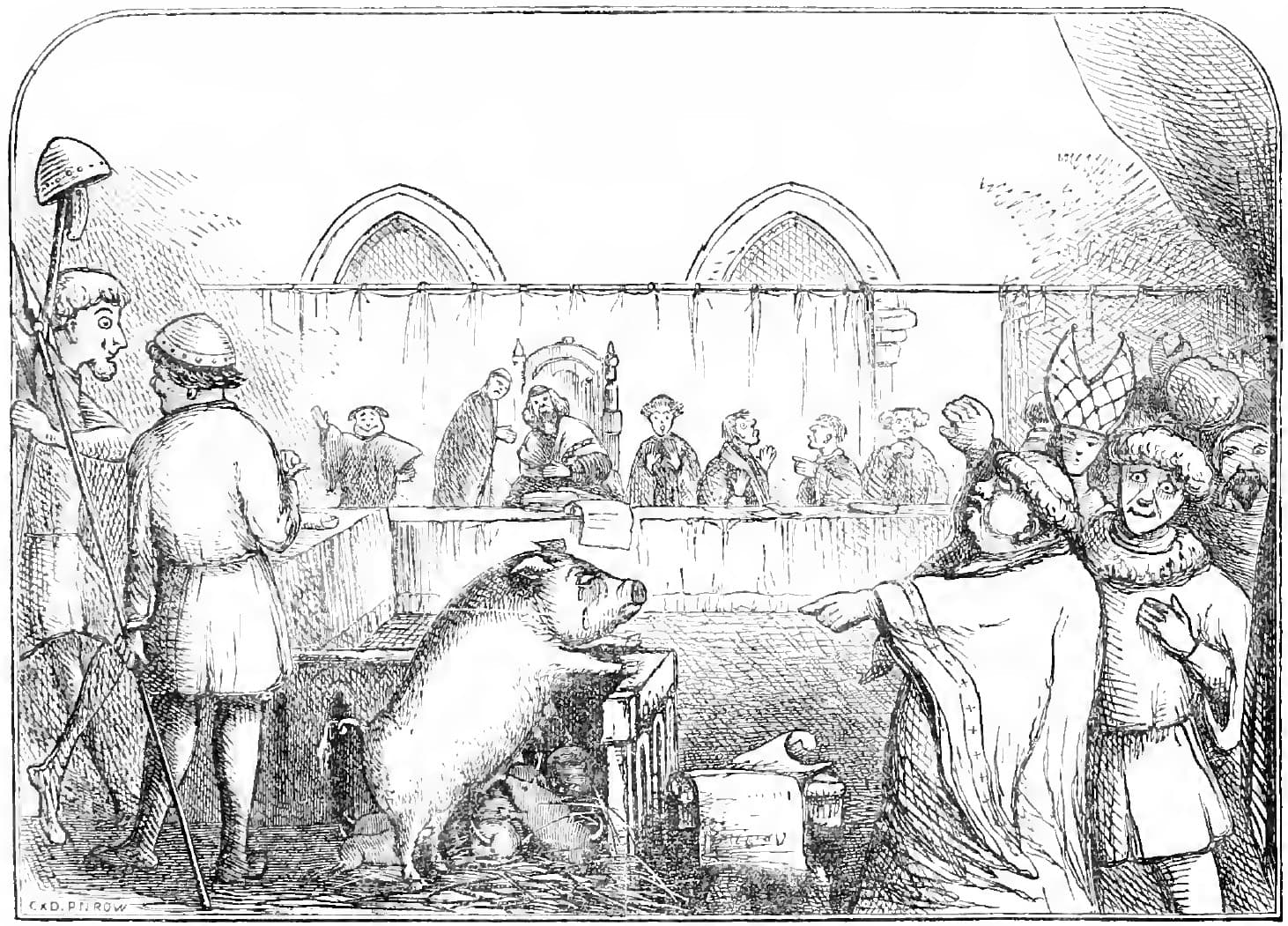
One of the very first substantiated animal trial cases was the capital punishment of a pig in 1266. In this case, the pig was found guilty of having mutilated a child. It’s unclear if the child in this case was killed or only maimed. Regardless, the townspeople saw it fit to bring the pig to trial and allow it to defend its actions. Of course, pigs can’t talk and, thus, the pig was unable to defend itself. It’s unclear if the pig was appointed a lawyer. However, most secular animal trials did not include a lawyer for the animal. The appointing of lawyers for animals was mostly seen in ecclesiastical animal trials. Additionally, church-led animal trials were most often against vermin infestations rather than acts of violence.
In this case, the pig was found guilty and sentenced to be publically burned to death. Hogs and sows stood trial quite often during this era. E. P. Evans’ book details over 200 cases, many of which were brought about against sows or hogs. In one case of a sow being found guilty of killing a 3-month-old in his crib, the sow was found guilty. However, her recently born piglets were pardoned. The pardon came because of their youth and the fact that they did not carry out the attack. They were also pardoned because their complicity in the attack could not be verified.
In the modern day, there are plenty of cases of pigs, both wild and domestic, killing and eating humans. There were over 100 cases of pig attacks in the United States from 1825 until around 2010.
The Case of Mary the Elephant in 1916

The case of Mary the elephant is unique in a similar way to the case of Katya the bear in that the case occurred relatively recently. Mary’s case was brought about in 1916, right around the time of World War I. The Sparks Circus had come through Erwin in East Tennessee. During a parade, the Asian elephant, Mary, was being ridden by her new handler. She saw a pile of watermelon rinds and was attracted to the idea of a quick snack. When she veered off the path of the parade, her handler whacked her on the head with a metal hook.
Mary wrapped her trunk around the man, pulling him off her back. Then, she launched him into the drink stand where she proceeded to trample his head. Guards attempted to take her down by unloading their pistols in her direction. However, the bullets were unable to pierce her hide. Once they finally got the situation under control, Murderous Mary, as she was now called, became public enemy number one. Ultimately, the town of Erwin decided to hang her from a crane, the only structure able to withstand her weight.
In more modern times, we are more aware of how intelligent elephants are, both intellectually and emotionally. Additionally, we are more aware that elephants are generally peaceful unless provoked. Elephants are especially gentle with humans since science has revealed that elephants’ brains respond the same way to humans as humans’ brains respond to cats and dogs (they think we’re cute.) In the more recent case of a woman who was not only killed by an elephant but then also had her funeral crashed by the same elephant that killed her, netizens were quick to ask “Well, what did she do to the elephant?” rather than calling for the elephant’s death.
The Case of a Murderous Pig in 1386
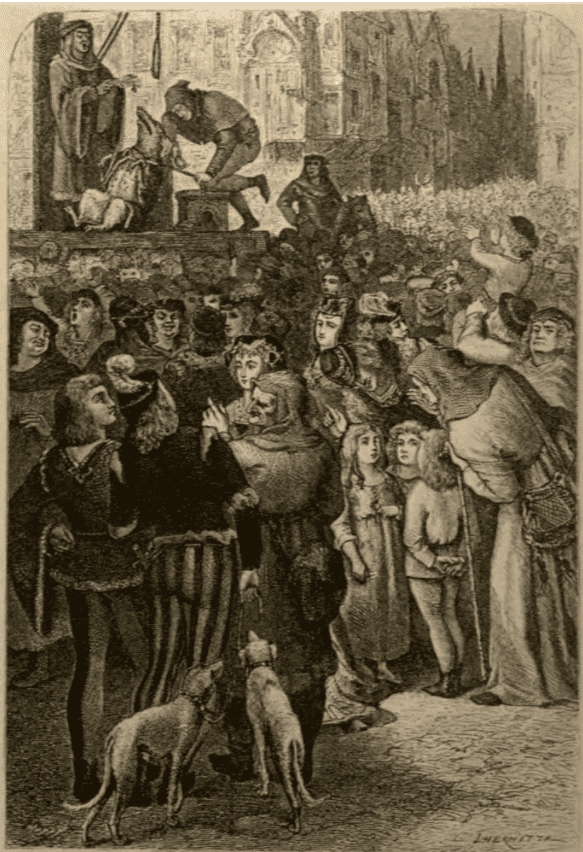
As we mentioned above, many of the animals on trial were swine. The tendency and history of pig-human violence are well-documented. While many people find pigs cute, they’re actually quite dangerous. Provoking a pig can cause it to attack and kill you. Additionally, while many people are aware of the pig’s reputation for eating just about anything it can get its jaws around, many people are unaware that this includes human flesh. If a pig attacks and kills you in its pen, it’s probably going to eat you, too.
This case from 1386 is notable because the execution of the pig is well-documented rather than the trial. The pig was tried and convicted of “eating infants in the street” (quite the crime, really.) After being sentenced to death, the pig’s execution didn’t just gain notoriety, it attracted a crowd befitting of a king. Spectators donned their best velvets and fanciest clothing to witness the public execution of a swine. The site of the execution remained as a sort of town-imposed sacred ground for more than 400 years. However, it was destroyed in carelessness in 1820.
The pig wasn’t just sentenced to death either. It was sentenced to be tortured and then hanged. The executioners maimed the pig’s head and forelegs before they hanged it. Pigs that were tried were often given the harshest punishments of the animals that stood trial. This disparity is because most cases of pigs were tried for murder. (Here’s a look at the 21 most intelligent animals in the world.)
